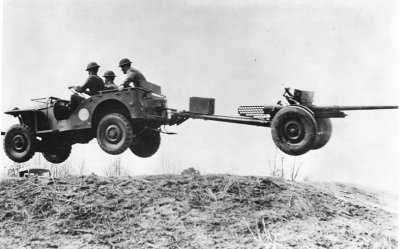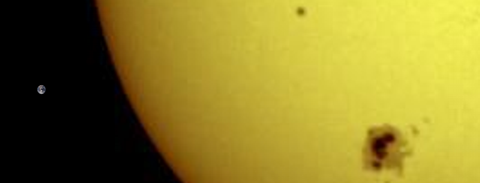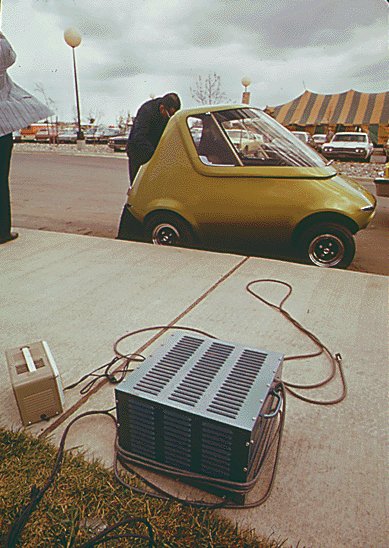Updated: June 24, 2013
We all know that the sexually confident spandex-wearing blue-and-red superhero draws his power from the Sun, right. We all know how mighty he is, and how he can do all kinds of weird things, like hurl cars a hundred meters away, use his X-Ray vision to spy on women in the shower lockers, freeze lakes, and other silly things you would expect from a comic book written in the dark 30s era.
While I claim that Superman is a dreadful menace to society, and a wife-beater at that, a friend of mine was asked to calculate how long it takes for our superhero to recharge its bodily fluids in order to be able to achieve supermanly feats. Like, for example. how long does it take for Superman to get enough energy from the Sun so he can hurl a 4-ton vehicle a hundred meters away? Indeed, in this article, we will answer that question. Many thanks to Mr. Droping Pilot [sic] for getting the numbers right. Or not.

Question ...
How much energy does Superman need to hurl a 4-ton vehicle to a distance of 100 meters?
Answer: Pimping up the physics
This is a fairly trivial question in classical mechanics, so let us. We will assume no acceleration past the initial throw or during, and negligible air friction, as it really won't matter much for a car weighing 4,000 kg flying through the air to such a small distance.


Moreover, we will assume:

Since we know the initial conditions, the X distance is 100 meters, hence:

Then, we do the same thing for Y. Without boring you too much, we will get that the initial velocity for the throw needs to be 44.7 m/sec. This means that Superman requires a kinetic energy of 4 x 106 J. This is a handsome number.
Now, we need to decide how much exposure Superman needs to charge his body with 4MJ of energy. We will do two calculations, one on the surface of the Earth at the equator in the perfect sunlight conditions at noon, and the other on the surface of the Sun. In both cases, we will assume that Superman's body has a surface of 1m2.
More assumptions. Sun is a black body, which means it is in thermal equilibrium and it emits electromagnetic radiation called black-body radiation. The radiation is emitted according to Planck's law, meaning that it has a spectrum that is determined by the temperature alone, not by the body's shape or composition. So far so good, anyone can copypasta from Wikipedia. We also consider Superman's internal energy conversion to be linear as well as 100% efficient. So our little photosynthesizer will not be undergoing nuclear reactions in his abdomen or whatnot, just simply and purely converting Sun's photons into his own energy.

Case 1: On Sun's surface
For our next set of calculations, we need the following figures. One is the Stefan-Boltzmann Law, which describes the power of a black body in relation to its temperature. We know that Sun's surface temperature is around 5800 degrees Kelvin. The constant of proportionality in the equation gives us the following:


From here, we get that:

And since we decided that Superman has a very convenient body surface of one square meter, then with this energy density, we get that our superhero can absorb roughly 64MJ of energy every second.
Case 2: On Earth's surface
Here we also have to take the distance into calculation, roughly 150 million km of distance between our two solar bodies, and then normalize the energy flux to the increased radius. Or we can use well-known figures, where Earth receives about 1004 watts per square meter. From here we get that Superman charge himself with 1.004KJ of energy every second in ideal conditions.
Time, now it's time
Let's translate the energy into actual charging times.

Since we require only about 4MJ for the task, Superman needs just 62ms to recharge. On the surface of our planet, the wait is a little longer, roughly 4000 seconds, or slightly more than one hour. This means that it is much better for Superman to dash to the Sun, which takes about eight minutes, then go back, rather than wait on the surface and slowly bask himself up to the required power rating. Moreover, just by leaving the atmosphere, he would gain so much more and speed up the recharging process.
Now, if we assume that Superman can store indefinite amounts of energy, then he could spend a few hours getting the Sun's energy and go back ready for many years of service. In fact, just the trip yonder and back would grant him with enough solar energy to hurl thousands, perhaps tens of thousands of cars away. Finally, we must assume that Superman does not lose energy when flying, slowing down, or converting some of it into breath, laser eye thingie, and such. And here we come full stop. Enough math for one silly article.
Conclusion
There it is, the myth resolved. Should Superman need some energy bars to get into the savior mode, then he can spend hours basking in the sun like a lizard, or he can fly outside the atmosphere, circling the planet, or even going for a visit to our Sun, where he can get a beautiful dose of energy three or four orders of magnitude more than what he would get on the surface of our hospitable planet. Then, he can come to us and do all his superhero stuff in between stalking women and what else the nerd with the glasses does.
To wit, we must also assume that Superman's internal energy conversion process is most likely more complicated than just pouring Joules from one bucket into another, and that it involves many chemical and physical processes that are not trivial. For example, we know that Superman is not hot to the touch, but rather human. So where and how does he store all that energy, and better yet, how can he utilize it so efficiency, in such short, powerful bursts. Lastly, does Kryptonite somehow cause adverse chemical reactions, which breaks his energy bonds, causing him to rapidly lose all his stored power and become weak and fragile and whatnot? We might follow up with more riddles and answers in the next article on Superman. For now, stay tight.
Note: All of the images used here are in public domain.
Cheers.